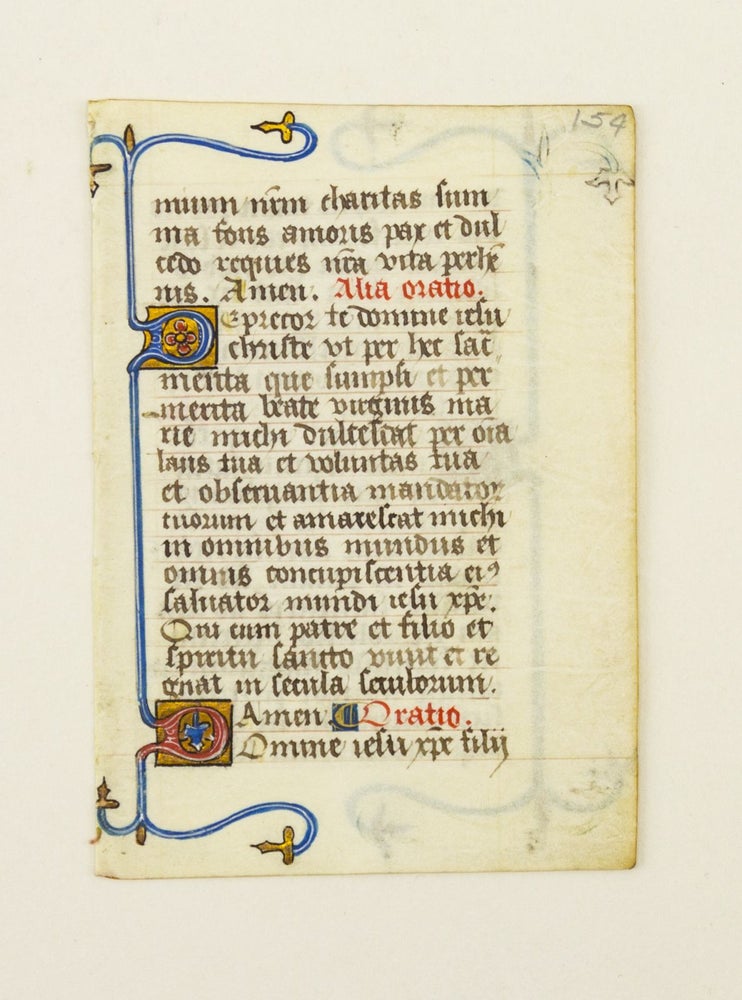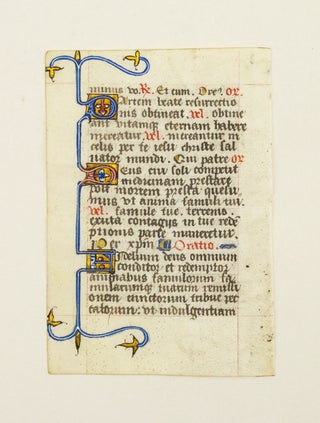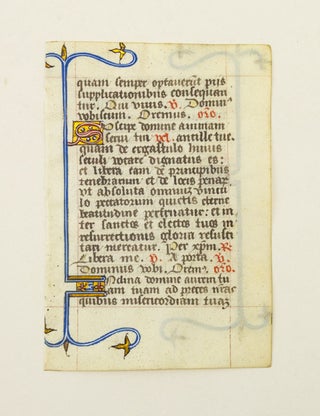FROM A COLLECTARIUM IN LATIN MADE FOR A FEMALE RELIGIOUS.
(France[?]: ca. 1450). 97 x 61 mm. (3 3/4 x 2 5/8"). Single column, 20 lines in an attractive gothic book hand.
Each leaf with two or more one- to two-line initials painted in blue or maroon with delicate white tracery and charming enclosed flowers, all on a field of burnished gold, the left or right margin on one or both sides with a bar border of blue and white, terminating in gold ivy leaves in the upper and lower margins. ◆The bar borders just slightly trimmed by the binder, otherwise in excellent condition, the text well preserved, the vellum unusually clean, the colors quite bright, and the glistening gold without any erosion or loss of brilliance.
Taken from an intact manuscript we sold in 2006 that was subsequently dismembered, these lovely leaves have considerable aesthetic appeal and charm as well as notable interest because of their surprising size, distinctive musical and textual content, and peculiar hypothetical provenance. In origin, the collectarium (sometimes called a collectar, collectarius, collectaneum, orationale, or capitulare) was a compilation of the collects, or prayers, said during the various hours of the Divine Office. But over time it came to comprise an ad hoc collection of the prayers and ceremonies not found in other service books that were specific to the uses of a particular house, congregation, or religious order. The presence of music throughout the original book indicates that our leaves were part of a choir book; however, unlike most choir book leaves, which range from very large to enormous in order to allow simultaneous use by a number of singers, the present pocket-size manuscript is quite atypical in that it could only have been used by a single person at any one time. These leaves are also highly unusual and, therefore, most interesting in that we know from consulting other portions of the original that this collectarium was written, not for a monastic house, but for a community of religious women who are referred to in other parts of the manuscript as "sisters." Judging from the frequency with which she is mentioned in the original, members of that community using the present choirbook seem clearly to have identified closely with the penitent Magdalene, the original book containing a portion of the double feast they celebrated for her and her presumed sister, Martha. This suggests a fascinating possibility in terms of the manuscript's provenance: beginning in the 13th century, houses of penitential sisters, known as Magdalens, were established in many European cities, often by wealthy lay persons, with the aim of providing former prostitutes with a safe haven in a religious community. It is just possible that our manuscript leaves were part of a book that was used in such a convent. (ST12778-0485-05B)
Price: $600.00



